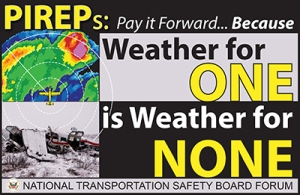By Dr. Rob Molloy
 The American Automobile Association projects that more than 42 million Americans will travel this Independence Day weekend, five million more than on Memorial Day weekend. More travelers on the road mean an increased risk for a crash. Unfortunately, 25 years of National Highway Traffic Safety Administration data show that impaired driving leads to nearly half of all deadly crashes on July 4th.
The American Automobile Association projects that more than 42 million Americans will travel this Independence Day weekend, five million more than on Memorial Day weekend. More travelers on the road mean an increased risk for a crash. Unfortunately, 25 years of National Highway Traffic Safety Administration data show that impaired driving leads to nearly half of all deadly crashes on July 4th.
Every year, we celebrate Independence Day with family and friends, watching fireworks and eating at barbeques. And, every year during this time of celebration, more than a hundred lives are lost on our roads and highways. Just this week, an Insurance Institute for Highway Safety analysis of crash data shows that more people die in motor vehicle crashes on Independence Day than any other day of the year.
In all 50 states and D.C., it’s illegal to drive with a blood alcohol content (BAC) of .08 or higher. Yet, over the July 4th period in 2014, 164 people were killed in crashes involving at least one driver or motorcycle operator with a BAC of .08 or higher. And every one of these crashes was preventable.
This year, the July 4th weekend extends from Friday, July 1, through Tuesday, July 5. We all have a responsibility to ensure that this Independence Day weekend isn’t the deadliest on record.
A variety of factors can influence the relationship between the consumption of alcohol and the resulting BAC level, such as a person’s gender and weight, the concentration of alcohol in the drink, and the rate at which one drinks. We know that alcohol slows down the central nervous system and affects a person’s cognitive performance, mood, and behavior. In general, however, alcohol’s effects are dose-dependent, meaning that alcohol’s impact changes or becomes more severe as more alcohol is consumed.
Impairment begins long before a person’s BAC reaches .08. In fact, it begins with the first drink. By the time a person reaches a BAC of .08, their risk of being in a crash is double that of a sober driver’s.
At that BAC level, the drinker is likely drowsy and their vision, perception, and ability to react are all impaired. In the U.S., more than 10,000 people lose their lives every year because a driver experiencing such impairment decided to get behind the wheel.
There is no excuse for making the decision to drive impaired by alcohol. This July 4th weekend, if your celebration includes alcohol, designate an unimpaired driver before you even take the first sip. If no unimpaired drivers are available, call a taxi or another for-hire vehicle. If you see someone about to drive or ride impaired, speak up, step in and take their keys. There are safe alternatives to driving while impaired, and we should all work to prevent impaired drivers from putting their life or the life of someone else at risk.
The NTSB supports the efforts of NHTSA, law enforcement, and community leaders across the country to spread the message that Buzzed Driving is Drunk Driving this Independence Day weekend.
Dr. Molloy is Director of the NTSB Office of Highway Safety.




